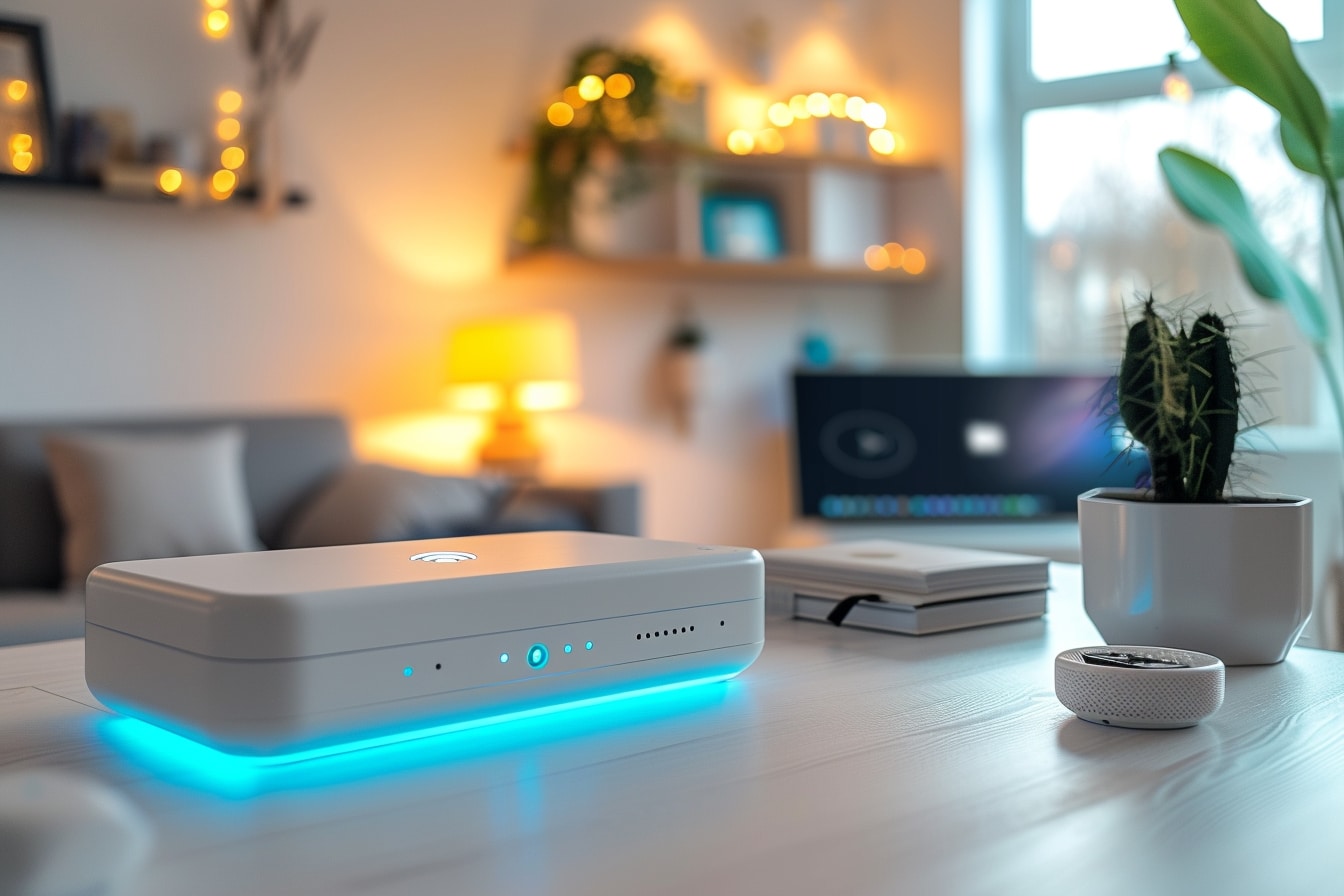Unlocking WiFi Freedom: A Comprehensive Guide on Enhancing Connectivity with WiFi Repeaters

The Wifi repeater, also known as an extender or amplifier, is an essential device in today’s connected world. This is a device that extends the coverage of your wireless network, eliminating dead zones where the connection is weak or non-existent. Using a repeater helps maintain a stable, high-performance connection, whether in an office, a multi-story home, or any other space with signal issues.
How does a wifi repeater work?
Functioning of a repeater is relatively simple. The device captures the existing WiFi signal from your router or access point and retransmits it amplified. This way, the signal can reach parts of the living or working space previously poorly served by the wireless connection.
Improved reach
Wifi repeaters are designed to push the limits of your wireless signal. Some models are even capable of extending network coverage up to several hundred square meters, making them ideal for large homes, gardens, or offices.
Speed and performance
Although signal strength is essential, network speed should not be neglected. Modern repeaters support high speeds, in line with the latest wireless communication standards, such as 802.11ac, which achieve much higher data transfer speeds than previous generations.
Choosing a wifi repeater
compatibility
Before purchasing, check compatibility with your router or modem. A repeater must be able to communicate effectively with your existing equipment for signal extension to be effective.
Ease of installation
Opt for a repeater with simple configuration, often accompanied by a mobile application or a web interface allowing intuitive and rapid arrangement of your extended network.
security
The security of your extended network should not be taken lightly. Look for extenders that offer advanced security protocols such as WPA2-PSK, which ensure the connection remains secure and protected against intrusions.
Frequency band
Depending on your needs, you can choose a single-band repeater, which operates on a single frequency (often 2.4 GHz), or a dual-band model, covering both 2.4 GHz and 5 GHz. Dual-band generally offers better performance and less interference.
Optimizing your network with a wifi repeater

Strategic positioning
To get the most out of your repeater, place it where your router’s signal is still strong, but close to the area you want to cover. Avoid physical obstacles and sources of interference, such as thick walls, mirrors and electronic devices.
Firmware update
Keep the repeater up to date with the latest firmware available. Updates often offer performance improvements and fixes for security vulnerabilities.
Advanced settings
Explore your extender’s advanced options for the best experience. Some models offer features such as access control, WiFi scheduling or WPS (Wifi Protected Setup) to make it easier to connect devices.
Use of selective bands
If you have a dual-band repeater, you can assign certain activities to each band. For example, reserve the 5 GHz band for online gaming and video streaming, while the 2.4 GHz band can be used for browsing and activities that don’t require a lot of bandwidth.
Impact of repeaters on the network environment
Reduced interference
A good WiFi repeater can help reduce interference, especially if you can choose the ideal transmission channel. This not only improves the quality of the connection within your network, but also that of neighboring networks.
Homogeneous network
With a well-configured repeater, you will benefit from a consistent network. This means a seamless transition between router and repeater, giving users an uninterrupted experience as you move within the coverage area.
Performance Analysis
Monitor effectiveness regularly of your repeater is crucial for a home or professional network operating at full efficiency. Online apps and tools allow you to run speed and signal tests to evaluate performance and make adjustments as needed.
Compatibility with other devices
Modern repeaters are generally compatible with most WiFi devices, including smartphones, tablets, smart TVs and home automation systems. Make sure your extender can pair seamlessly with the range of devices you use every day.
Help with the decision
The level of satisfaction with a WiFi repeater can depend on various factors, including the surface area to be covered, the layout of the rooms and the type of building. Consider your specific environment to determine if a repeater is the right solution for you.
In summary, wifi repeaters offer a large number of benefits:
Expanded and improved connectivity
Whatever the size or shape of your home or office, a repeater helps you eliminate areas without a signal, ensuring complete Wi-Fi coverage.
flexibility
The ability to adjust settings, choose between different bands, and place the device in the exact location needed makes the repeater a flexible tool in managing your wireless network.
Simple installation and management
Contemporary repeaters boast intuitive installation and accessible management functions, making their use practical even for the less tech-savvy.
Improving your WiFi connection through the use of a Wifi repeater is a practical and effective solution. By considering the essential features and implementing a repeater wisely, it is possible to enjoy a reliable and efficient wireless connection in every corner of your environment.
Comments
Leave a comment